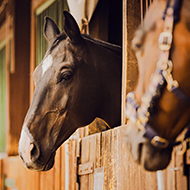RVC reveals top tortoise health problems
The most common health conditions were externally visible.
A new Royal Veterinary College (RVC) study has listed beak abnormalities, overgrown nails and shell abnormalities as the most common health disorders affecting chelonian species.
The findings come as researchers reveal the average age of death of chelonians in the study to be just 7.32 years.
Researchers from RVC's VetCompass Programme reviewed the medical records of 2,040 animals from chelonia species. Of this data set 94.26 per cent were tortoises, 3.63 per cent were terrapins and 2.11 per cent were turtles.
The most common tortoise species were Hermann's tortoise, Horsfield's tortoise and the Mediterranean spur-thighed tortoise. They were most commonly afflicted with beak abnormality, overgrown nails and shell abnormality.
The most common terrapin species investigated by the RVC researchers were musk turtles and the yellow belly slider. Terrapins were commonly affected by top and bottom shell abnormalities.
Researchers noted that these health disorders were all externally visible, making them easier for veterinary professionals to recognise and diagnose them.
However, while they are often associated with inappropriate husbandry, they can also be related to internal diseases. Due to evolutionary developments, chelonians are known to hide internal disease, making them harder to identify and diagnose.
During the study period, the death rate of chelonian species was recorded as 9.90 per cent.
Although some species of tortoise have a life span of up to 100 years, the average age of death in the current study was 7.32 years. Researchers believe that many chelonians could be dying prematurely.
It is hoped that identifying key areas of concern for tortoises, terrapins and turtles will improve awareness among owners and veterinary teams.
Jessica May Hornby, exotic veterinary surgeon and lead author of the study, said: “This research has provided us with a base to start to understand what veterinarians are currently seeing in practice and therefore give an insight into the health of the chelonian population.
“People are no longer only keeping the more common species of pets, such as dogs and cats, so this data is vital to understanding where and how owners and veterinarians need further support and training to ensure these brilliant little guys get the veterinary care they need, especially when many should easily be outliving us!”.
The full study can be found in the journal PloS ONE.
Image © Shutterstock



 Zoetis has launched a new survey to identify management techniques for Equine Herpes Virus (EHV).
Zoetis has launched a new survey to identify management techniques for Equine Herpes Virus (EHV).